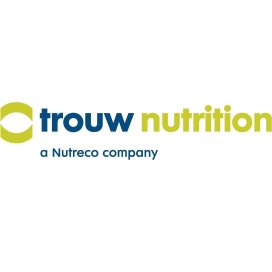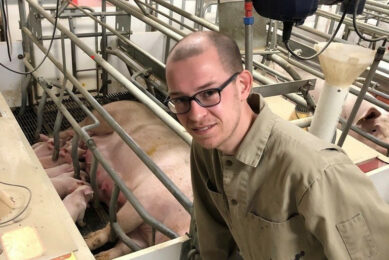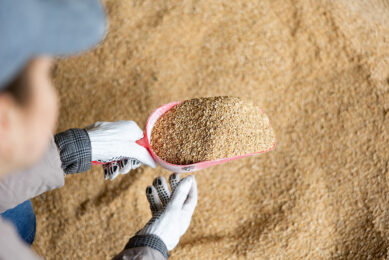“Livestock feed innovation with a growing digital core”

We have a much better and stronger story to tell around animal protein than we had a decade ago. To keep this strong narrative, Trouw Nutrition fosters innovation and strongly focuses on digital transformation in livestock.
This is according to Eduardo Lopes Alberto from Trouw Nutrition, the livestock feed business line of Nutreco (see box for full bio). We sat down with Alberto to reflect on the narrative in livestock farming, and why innovation entails more than the company’s ability to make things cheaper, better, faster.
Let’s start by asking: Are we innovative enough in our sector?
“Agriculture has made tremendous advancements because of innovation. But agriculture is also considered a more conservative space, compared to other sectors. Farmers are terribly busy doing their job, and sometimes even operate in survival mode during unfavourable events like severe weather or extreme unbalances in supply/ demand. At the same time, they see new ‘promising’ technology that is coming their way. Some of them may turn out to be snake oil (technology or applications that do not live up to their hype, or simply do not work), and this can break trust and willingness to adopt new things. Secondly, being part of the feed-to-food business means there are a lot of regulations in place around what we can and cannot use. And thirdly, we are dealing with many variables, such as live animals, the weather, feed sources, management styles, and regional factors. It can therefore be challenging to directly translate all research results to all types of commercial settings around the world. It is logical that farmers might be hesitant to see the benefits of something straight away when it tested in controlled circumstances only. One can say each farm(er) conditions are unique.”
Does this mean the better, cheaper, faster approach is too narrow?
“The classic definition of innovation is indeed: making an existing product or solution better, faster, cheaper. This is certainly true for farming as well, and something Trouw Nutrition has been doing over many years. For example, the milk replacers and premixes we sold 40 years ago are different than the products we sell today, due to continuous improvements in formulation, ingredient selection, and the research put into it. The result: a more powerful and/or cost-effective product. But innovation in farming is also about long-term focus, being ready to handle upcoming challenges, operating in volatile markets, and producing more with less. Being cheaper is not always key. I believe that in the future, all farms will – and must be – extremely sustainable, high in animal welfare and health, cost–efficient, and highly automated. For some regions this is already today’s practice. Other regions are not there yet. In a few decades from now, the ‘farm of the future’ will be the norm and widely spread. It is up to us to understand what the market needs to equip them with a license to farm in 2050 and beyond. This is why I like the quote from the American writer William Gibson who once said: The future is already here, it is just not evenly distributed. This is certainly true in agriculture. It is a fragmented market, and not all regions are moving at the same pace. But eventually, we are all moving into the same direction.”
What does this mean for the portfolio of Trouw Nutrition?
“Nutritional solutions are, and will remain, extremely important for our customers to run a successful business. Nutritional and formulation expertise is the backbone of our company. But next to a nutritional product approach to innovation, we also must drive digital transformation. Because when the market is demanding digitalisation, we must follow through. And there is no better time to do this. Artificial Intelligence (AI) is a true game changing technology, disrupting all kinds of existing products and businesses. Take Microsoft for example. Over the last decades, they have made incremental improvements to their software packages. Excel got a bit smarter, Word a bit faster, PowerPoint a bit prettier, etc. Then there was AI, that transformed Microsoft solutions way faster, and took it to a whole new level. Did it go overnight? No. Over the last few years, Microsoft became more cloud-based, worked on several integrations in the backend, and more. It was the commitment to innovate, prepare and progress, which created the perfect environment to make AI successful when the opportunity was there. The years and resources spent on AI integration will now give them a competitive edge and expertise. They seized the opportunity very well. At Trouw Nutrition, we must do the same. For instance, if we want to be a leader in gut health solutions, we must prepare to do so, and e.g., make sure we build an outstanding group of experts around the microbiome. If we commit to being fully digital, we must have a great data team and gather high quality, farm related data points in a consistent way to be able to build AI models that no one else has. We simply do not have to wait too long to seize the opportunities that are in front of us. We are a very data intensive business already which is great, but we also must be smart in automating things and monetising the data. This way we can be better and more cost-effective…but also a lot faster.”
Can you be a feed company and an IT/agtech company at the same time?
“The number and speed that new technologies enter the market right now is mind blowing. At Trouw Nutrition we are known to be very innovation-minded and committed to constant improvement. But considering the speed of AI progress and pace of other technologies, we must change and evolve even faster to be able to remain leading and be relevant for our customers. And change is a good thing. In fact, our customers want us to evolve and grow with them, as this builds trust and commitment to prepare for the future. Our customers need us more than ever, for example on sustainability. Over the last few years, we have been investing properly in developing digital tools, including the upgraded MyNutriOpt web-based portal, giving access to a suite of digital services including sustainability tools like MyFeedPrint and MyMilkPrint. The reputation we have for our existing brands and the strong relationship with our clients help us to drive the adoption of these new solutions we are bringing to market. This is why I am convinced that we can be a nutritional and digital solution provider at the same time. However, this mindset also requires creating partnerships to bridge knowledge gaps. What are others (non-agricultural companies) doing around AI application and data? What can we learn from the human field on certain topics like the microbiome, functional feed, or disease prevention? They can bring the technology; we have the people and knowledge to translate it to farming conditions (including all the nuances and variables attached to that). And there are also many universities around the world that work on the same livestock challenge as we do. We have always had great academic partnerships, and this is an important part of our innovation culture.”
Are you positive about the animal protein market outlook?
“It is quite interesting how the narrative is changing around animal protein in the last decade. Although many young people have no direct connection with farming or know a farmer, the interest in food and health is booming. More people consider animal protein as a healthy part of their daily meal and are better informed about farming practices and where the food comes from. I think the poultry, dairy, and pork associations have been doing an excellent job in trying to change the narrative and educating the public about farming practices, and the nutritional benefits of animal products. And this is specifically the case we see in the developing markets. I believe in a world where everybody can choose for themselves, whether it is being a meat eater or being vegetarian. But it is good to see that animal protein is having a little revival and starts to successfully emerge from years of heavy criticism. Of course, we still have many challenges to overcome. But overall, I am extremely optimistic about our sector and the drive to add more positive stories (with data!) to the narrative. And this all starts with being committed to innovation.”
Author: Emmy Koeleman






